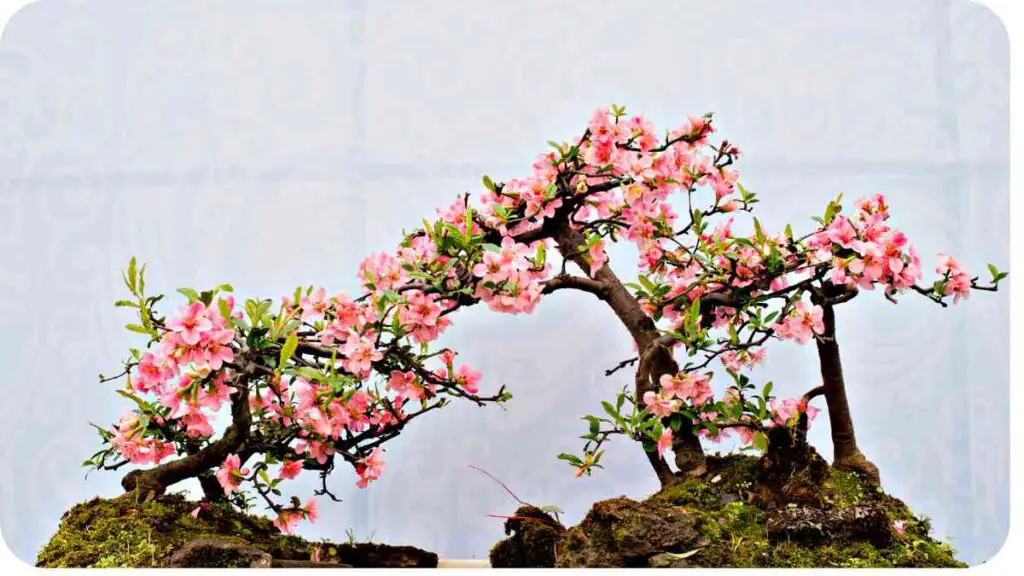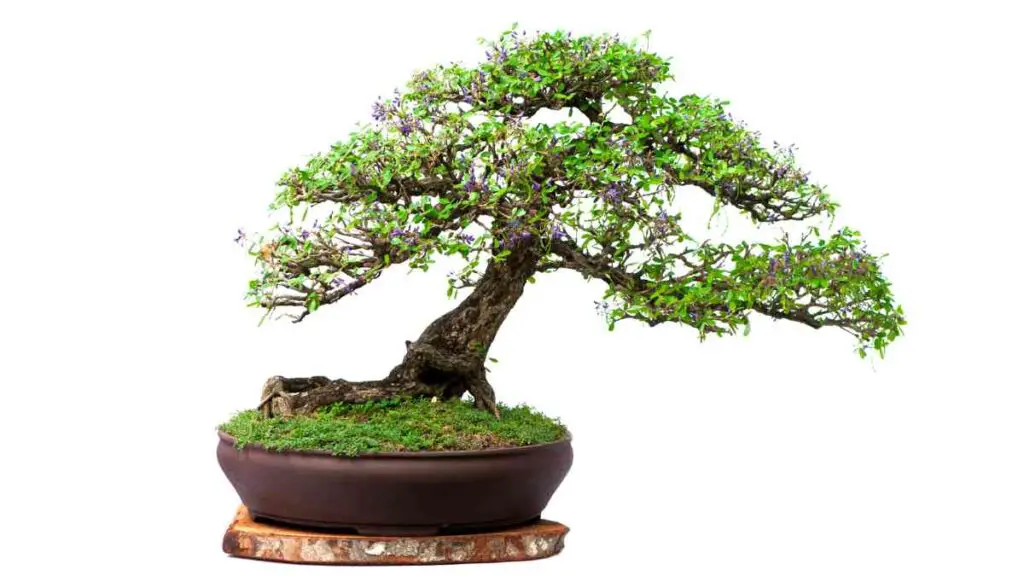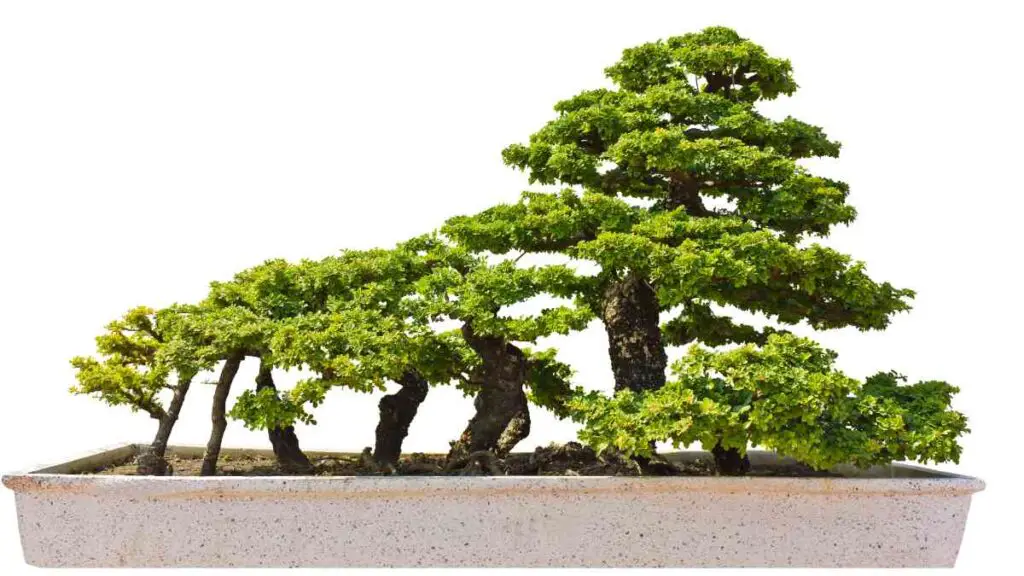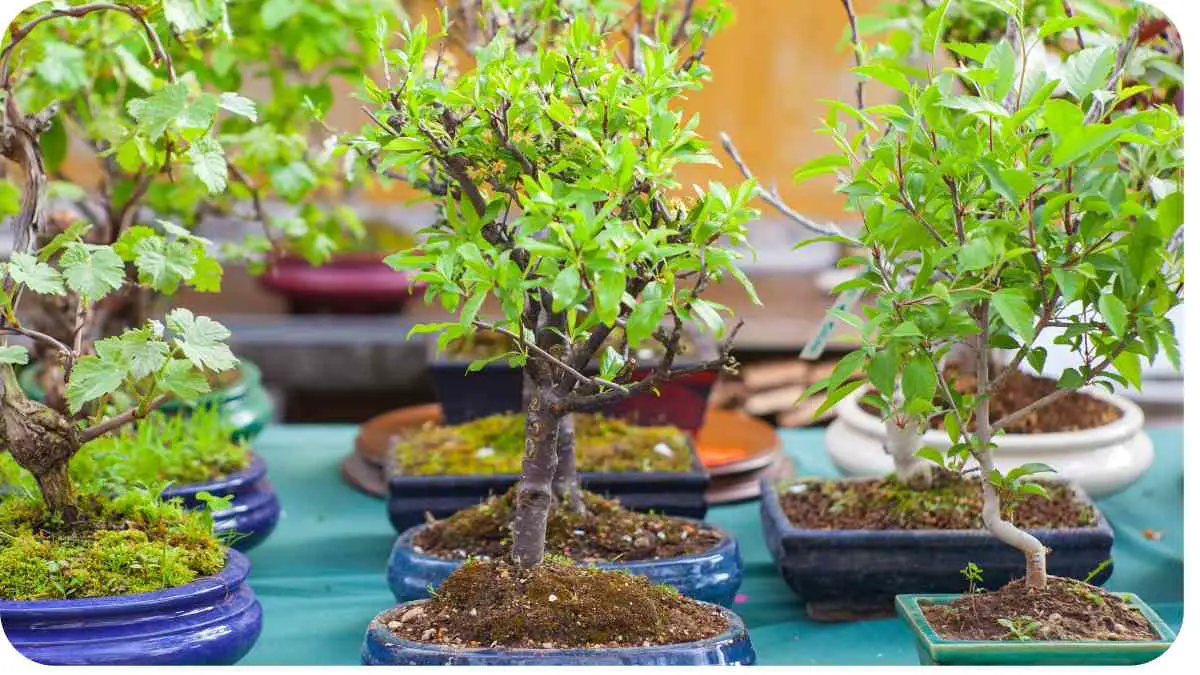Bonsai, the art of cultivating miniature trees in small containers, has captivated enthusiasts for centuries. Despite its diminutive size, bonsai trees can live for decades, even centuries. In this article, we’ll delve into the secrets behind the longevity of bonsai trees and explore the techniques, tools, and practices that contribute to their enduring beauty.
| Key Takeaways |
|---|
| 1. Bonsai cultivation requires patience, persistence, and mindfulness. |
| 2. Proper care and maintenance, including watering, fertilization, and pruning, are essential for bonsai health and longevity. |
| 3. Bonsai trees can thrive in various climates, but specific care considerations may be necessary based on the local environment. |
| 4. Understanding the unique needs of different bonsai species is crucial for successful cultivation. |
| 5. Bonsai cultivation is not just a hobby but a journey of self-discovery and spiritual growth. |
2. The Art of Bonsai

What is Bonsai?
Bonsai, derived from the Japanese words “bon” meaning tray and “sai” meaning plant, is the art of growing ornamental trees or shrubs in miniature containers. It originated in China over a thousand years ago and was later adopted and refined by Japanese artisans.
History of Bonsai
Bonsai has a rich history dating back to ancient China, where miniature landscapes known as penjing were cultivated. The practice later evolved in Japan, where it gained prominence as an art form during the Kamakura period (1185–1333).
Delving into the intricacies of bonsai cultivation unveils a world of artistry and patience. Learn how to master the art of miniaturizing mighty maples and create miniature wonders that stand the test of time.” Bonsai Basics Revealed
Different Styles of Bonsai
Bonsai can be classified into various styles based on the arrangement of the trunk, branches, and roots. Some popular styles include formal upright, informal upright, slanting, cascade, and forest.
3. The Science Behind Bonsai’s Longevity
Root Pruning
One of the key practices in bonsai cultivation is root pruning. By periodically trimming the roots, bonsai growers control the size of the root system, which in turn limits the tree’s overall size. Root pruning also encourages the development of fine feeder roots, essential for absorbing nutrients and water.
Trunk and Branch Training
To create the characteristic shapes of bonsai trees, trunk and branch training techniques are employed. This involves carefully wiring and bending the branches to achieve the desired aesthetic. Over time, as the branches grow and thicken, the wiring is adjusted to maintain the desired form.
Pruning Techniques
Regular pruning is crucial for maintaining the compact size and shape of bonsai trees. By selectively removing unwanted branches and foliage, bonsai growers promote branching, enhance the tree’s silhouette, and encourage ramification the development of secondary branches.
4. Essential Tools for Bonsai Maintenance

Bonsai Shears
Bonsai shears, also known as pruning shears or scissors, are a fundamental tool for bonsai enthusiasts. These specialized shears have sharp, precise blades that allow for clean and accurate pruning of branches and foliage. It’s essential to invest in high-quality bonsai shears to ensure clean cuts and minimize damage to the tree.
Pruning is not just about cutting away; it’s about unlocking the growth potential of your plants. Discover the secrets behind pruning techniques and harness the growth-boosting power that lies within.” What’s the Trick?
Wire Cutters
Wire is often used in bonsai training to shape and position branches. Wire cutters are indispensable for safely removing wires once the branches have set into their desired positions. Using the proper wire cutters helps prevent damage to the branches and ensures a neat finish.
Root Rakes
Root rakes are used during repotting to gently tease out and untangle the roots of bonsai trees. These tools come in various shapes and sizes, with sturdy prongs designed to work through compacted soil without damaging delicate roots. Proper root maintenance is essential for ensuring the health and vitality of bonsai trees.
5. Choosing the Right Bonsai Species
Popular Bonsai Species
There is a wide variety of tree species that are suitable for bonsai cultivation. Some popular choices include juniper, pine, maple, ficus, and elm. Each species has its own unique characteristics and requirements, so it’s essential to research and choose a species that aligns with your climate and skill level.
Ever wondered how bonsai trees transform into miniature marvels? Explore the fascinating journey of bonsai cultivation and uncover the techniques behind crafting these botanical wonders.” Miniature Wonders
Considerations for Beginners
For beginners, it’s advisable to start with hardy and forgiving species that are more tolerant of mistakes and environmental fluctuations. Species like the Chinese elm (Ulmus parvifolia) and the Ficus retusa are excellent choices for novice bonsai enthusiasts due to their resilience and adaptability.
6. Bonsai Soil and Potting Mixtures

Importance of Soil Composition
The soil in which bonsai trees are planted plays a crucial role in their health and development. Bonsai soil should provide adequate drainage, aeration, and moisture retention while also supplying essential nutrients to the roots. Traditional garden soil is too dense for bonsai cultivation and can lead to root rot and other problems. Instead, bonsai growers use specialized soil mixes tailored to the needs of their trees.
Potting Mixtures for Different Species
Different bonsai species have varying soil preferences based on factors such as their native habitat and growth habits. For example, coniferous species like pine and juniper prefer well-draining, gritty soil mixes, while deciduous species like maple and elm thrive in slightly more moisture-retentive mixes. It’s essential to choose a potting mixture that matches the specific needs of your bonsai species.
7. Watering and Feeding Bonsai
Watering Frequency
Proper watering is critical for bonsai health. The frequency of watering depends on factors such as the species of tree, the size of the pot, and environmental conditions. As a general rule, bonsai trees should be watered when the soil begins to dry out, but before it becomes completely dry. It’s essential to avoid both overwatering, which can lead to root rot, and underwatering, which can cause stress and dehydration.
Fertilization Techniques
In addition to water, bonsai trees require regular fertilization to replenish nutrients depleted from the soil. Fertilizers provide essential elements like nitrogen, phosphorus, and potassium, which are necessary for healthy growth and development.
Bonsai fertilizers come in various forms, including liquid, granular, and organic options. It’s important to follow the recommended application rates and schedules to avoid overfertilization, which can damage the tree’s roots.
8. Bonsai Display and Maintenance
Indoor vs. Outdoor Display
Bonsai trees can be displayed both indoors and outdoors, each with its own advantages and challenges. Indoor display allows for greater control over environmental conditions such as temperature and humidity, making it suitable for species that require more stable conditions.
However, indoor bonsai may require supplemental lighting to thrive, especially in areas with limited natural sunlight. Outdoor display, on the other hand, exposes bonsai trees to natural elements like sunlight, rain, and wind, which can promote vigorous growth and enhance their natural beauty.
Trimming isn’t just about aesthetics; it’s about promoting robust growth in your plants. Understand the science behind why trimming plants makes them stronger and more resilient.” Grow Stronger
Seasonal Maintenance Tips
Proper seasonal care is essential for the health and vitality of bonsai trees. During the growing season, which typically spans spring through fall, bonsai trees require regular watering, fertilization, and pruning to promote growth and development.
As temperatures drop in the winter months, bonsai trees enter a period of dormancy, during which they require less water and no fertilization. Winter is also the ideal time for major pruning and styling, as the tree’s growth is minimal and it is less susceptible to stress.
9. Common Bonsai Pests and Diseases
Identification and Treatment
Bonsai trees are susceptible to a variety of pests and diseases that can threaten their health and vitality. Common pests include aphids, scale insects, spider mites, and caterpillars, which can cause damage to leaves, stems, and roots.
Diseases such as fungal infections and bacterial rot can also take hold if proper care is not taken. It’s essential for bonsai growers to regularly inspect their trees for signs of pests and diseases, such as yellowing leaves, wilting foliage, or unusual growths. If pests or diseases are detected, prompt action is necessary to prevent further damage. Treatment options may include pruning affected areas, applying insecticidal or fungicidal sprays, or repotting the tree in fresh soil.
Preventative Measures
Preventing pests and diseases is often more effective than treating them after they occur. Good bonsai care practices, such as proper watering, fertilization, and pruning, can help keep trees healthy and resilient to pests and diseases.
Additionally, maintaining proper hygiene by regularly cleaning tools, removing dead or decaying plant material, and keeping the growing area free of debris can help prevent pest infestations and disease outbreaks. It’s also essential to quarantine new trees or plants before introducing them to your bonsai collection to prevent the spread of pests and diseases.
Discover the remarkable resilience of bonsai trees, defying the constraints of small pots to thrive for centuries. Uncover the secrets behind their survival in seemingly inhospitable conditions.” Centuries in Small Pots
10. Bonsai Care in Different Climates
Tropical Climate
In tropical climates characterized by warm temperatures and high humidity, bonsai trees require regular watering to prevent drying out. However, it’s crucial not to overwater, as excessive moisture can lead to root rot. Providing adequate ventilation and airflow around the tree can help prevent fungal infections and other moisture-related issues. Tropical bonsai trees may benefit from occasional misting to maintain humidity levels, especially in dry indoor environments.
Temperate Climate
In temperate climates with distinct seasons, bonsai trees experience fluctuations in temperature and moisture levels throughout the year. During the growing season, bonsai trees require regular watering and fertilization to support vigorous growth. As temperatures drop in the winter months, it’s essential to protect bonsai trees from freezing temperatures by bringing them indoors or providing frost protection. Winter dormancy is also an ideal time for major pruning and styling, as the tree’s growth slows down.
Arid Climate
In arid climates characterized by low rainfall and high temperatures, bonsai trees may require more frequent watering to prevent dehydration. However, it’s essential to avoid waterlogging the soil, as bonsai trees are susceptible to root rot in excessively wet conditions.
Providing shade during the hottest part of the day and mulching the soil can help conserve moisture and protect bonsai trees from heat stress. Additionally, selecting drought-tolerant species and using well-draining soil mixes can help bonsai trees thrive in arid climates.
11. The Bond Between Bonsai and Its Caretaker
Patience and Persistence
Caring for bonsai trees requires a significant amount of patience and persistence. Unlike traditional houseplants, bonsai trees are long-term commitments that require ongoing care and attention.
It can take years, even decades, to develop a bonsai tree into a masterpiece. Patience is essential when waiting for new growth, shaping branches, and refining the overall design of the tree. Despite setbacks and challenges along the way, dedicated bonsai growers persevere, knowing that their efforts will be rewarded with the beauty of a well-crafted bonsai tree.
Finding Zen in Bonsai Care
Bonsai cultivation is more than just a hobby—it’s a form of meditation and a way of connecting with nature on a deeper level. The act of caring for bonsai trees requires focus, mindfulness, and a deep appreciation for the natural world.
As bonsai enthusiasts tend to their trees, they enter a state of flow, where worries and distractions fade away, and they become fully immersed in the present moment. Bonsai care provides an opportunity to slow down, reflect, and find inner peace amidst the chaos of everyday life.
12. Conclusion
Bonsai cultivation is a timeless art form that has captivated enthusiasts for centuries. In this article, we’ve explored the secrets behind bonsai’s longevity, from the meticulous pruning and training techniques to the careful selection of soil and potting mixtures.
We’ve discussed the importance of proper care and maintenance, including watering, feeding, and pest management, as well as the unique considerations for different climates.
We’ve also touched on the profound bond between bonsai trees and their caretakers, highlighting the virtues of patience, persistence, and mindfulness. Bonsai cultivation is not merely a hobby but a journey of self-discovery and spiritual growth, where enthusiasts find solace and serenity amidst the tranquil beauty of miniature landscapes.
Whether you’re a seasoned bonsai enthusiast or a curious beginner, embarking on the journey of bonsai cultivation offers endless possibilities for creativity, learning, and personal enrichment. As you nurture your bonsai trees, may you find joy in the process and discover the timeless beauty and rewarding nature of this ancient art form.
So, what are you waiting for? Dive into the world of bonsai cultivation and experience the magic of creating living works of art that will bring joy and inspiration for generations to come. Happy bonsai growing!
With warm regards,
Further Reading
- Bonsai Nut: Life Expectancy
- Explore discussions on the life expectancy of bonsai trees and gain insights from experienced bonsai enthusiasts.
- Green: How to Gift Long-lasting Bonsai to Your Mother
- Discover secrets to selecting and caring for long-lasting bonsai trees as thoughtful gifts for loved ones, particularly mothers.
- Bonsai for Beginners: The Life Expectancy of Bonsai Trees
- Learn about the factors influencing the life expectancy of bonsai trees and how to prolong their lifespan through proper care and maintenance.
FAQs
How long do bonsai trees live?
Bonsai trees have the potential to live for decades, even centuries, with proper care and maintenance.
What factors influence the longevity of bonsai trees?
The lifespan of bonsai trees can be influenced by various factors, including species, environmental conditions, and care practices.
Can bonsai trees outlive their caretakers?
Yes, some bonsai trees have been passed down through multiple generations, outliving their original caretakers.
Do bonsai trees require special care compared to traditional houseplants?
Yes, bonsai trees require specialized care, including regular pruning, wiring, and repotting, to maintain their miniature size and aesthetic.
How can I ensure the longevity of my bonsai tree?
To ensure the longevity of your bonsai tree, it’s essential to provide proper watering, fertilization, and protection from pests and diseases, as well as periodic pruning and styling to maintain its shape and health.

For 15 years, Hellen James has worked in the gardening industry as an expert and landscape designer. During her career, she has worked for a variety of businesses that specialize in landscaping and gardening from small firms to large corporations.

